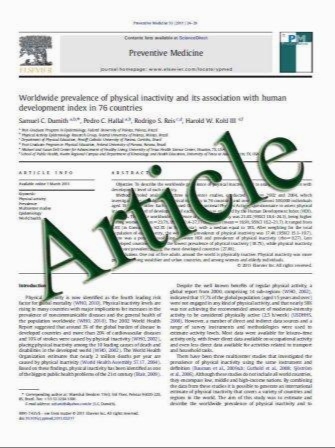Hereditary renal tubular disorders in Turkey: demographic, clinical, and laboratory features
- نوع فایل : کتاب
- زبان : انگلیسی
- مؤلف : Rezan Topaloglu Esra Baskn Elif Bahat Salih Kavukcu Nilgun Cakar Osman Donmez Ayfer Gur Guven Salim Calskan Ozlem Erdogan Fatos Ya
- چاپ و سال / کشور: 2011
Description
Background The Turkish Renal Tubular Disorders Working Group aimed to form a patient registry database and gathered demographic, clinical, and laboratory data in various hereditary renal tubular disorders (HRTDs). Methods A questionnaire comprising HRTDs was sent to the centers. The cohort was composed of 226 patients (109 girls, 117 boys). Results The distribution of patients according to HRTD was as follows: 45.6% distal renal tubular acidosis (dRTA), 26.6% proximal RTA (pRTA), 3.5% type IV RTA, 21.7% Bartter’s syndrome, and 2.6% Gitelman’s syndrome. Cystinosis was the most common cause for renal Fanconi syndrome. Age at diagnosis was between 1 month and 16 years. Overall consanguinity rate was as high as 72%. Rate of affected siblings was 28.5%. pRTA and type IV RTA were more common in males. Most common presenting symptoms were failure to thrive, lack of appetite, and vomiting. Nephropathic cystinosis was the most common HRTD leading to renal failure, followed by dRTA. Hearing loss was present in 23% of patients with dRTA and 6.3% of patients with Bartter’s syndrome. No other patient had hearing loss. Convulsions were noted in Bartter’s syndrome patients with failure to thrive, especially in those with height below 3%. Polyuria and nephrocalcinosis were more common in dRTA patients with deafness compared with patients without deafness. Conclusions This data reflected a high number of HRTDs as a result of high consanguinity rate in Turkey. Our data serve as a database of demographic, clinical, and laboratory features of this rare disease group.
Clin Exp Nephrol (2011) 15:108–113, Received: 6 October 2010 / Accepted: 12 October 2010 / Published online: 20 November 2010 Japanese Society of Nephrology 2010


